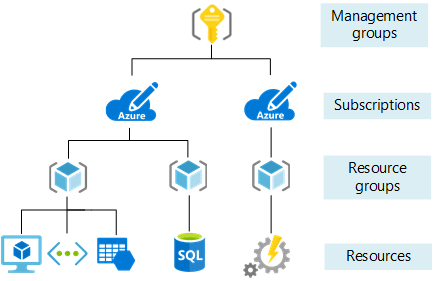An Interest In:
Web News this Week
- March 19, 2024
- March 18, 2024
- March 17, 2024
- March 16, 2024
- March 15, 2024
- March 14, 2024
- March 13, 2024
Getting Started with Azure Essentials
This is the first in a series of blogs about Azure that will help those who want to learn more about the platform, prepare for the Azure Fundamentals exam, or improve their skills as a developer, consultant, or architect.
What is Azure?
Microsoft Azure is a cloud infrastructure service developed by Microsoft for developing, testing, deploying, and maintaining software and services via Microsoft-managed data centers.
How can I get to Azure?
The Azure portal is a tool for gaining access to and getting started with Microsoft Azure.
What does Azure Services mean?
Azure offers a logical grouping of resources, frameworks, and applications known as a service or group.
- Compute - to create a virtual machine - windows, Linux, or third party.
- Storage Service - to store data, files, blob, etc
What factors do you need to think about when building Azure services?
1. Closest to user
Before you create any Azure resource, make sure you choose an Azure region that is close to your user base. Azure region reference
2. Cost & Pricing
Consider Azure service pricing, which varies depending on location, volume, and other factors. Until developing Azure services, use the Azure pricing calculator to figure out how much they would cost. Azure Pricing
3. Service Availability
Internal - Service is available for internal Microsoft users.
Preview - Users will use an Azure Subscription to access these services, which are currently in a public beta.
General Availability (GA) - Means "production service," and it can now be used by anyone.
04. Compliance
Microsoft Azure gives you the freedom to choose compliant data centers based on sector, location, and other factors. For example, if you have a client in the healthcare industry in the United States, you can choose a HIPAA-compliant data center, or if your client is in Europe, you can choose GDPR-compliant data centers.
What are the various ways to Access Azure?
You may use azure in the following ways:
- Azure Portal
- Azure CLI
- PowerShell
- SDK
- Restful API
For accessing, provisioning, and controlling Azure resources, Azure Portal, Azure CLI, and Powershell are used.
For consuming Azure services, the SDK and Restful API are used.
Restful APIs are endpoints that can be used to access Azure services. Let's say you've created a storage service on your Azure subscription, and you want to consume it. You can do so by using the storage service endpoint that Azure provided when you created it.
You can also provision, access, and handle Azure resources using CloudShell, a browser-based command-line interface provided by Azure.
Azure CLI and Powershell are platform-agnostic software that can be built locally.
Azure CLI
Install the Azure CLI for Windows or Mac.
After installing the Azure CLI, use the az --version command to verify the CLI version.
az --versionThe browser-based CLI Azure Cloud Shell is the simplest way to get started with the Azure CLI.
To Learn details about Azure CLI refer to the Link.
To check the Azure CLI installed locally type az.
Azure PowerShell
Power shell is a versatile automation feature written in the.NET framework.
PowerShell 5.1 on Windows and PowerShell 6.X and above on all platforms are supported by Azure Powershell.
PowerShell 5.1 is also installed if you're running Windows 10 edition 1607 or higher.
Run the Windows Powershell and install Azure Module.
install-module -name azFor the Nuget provider, choose Yes.
What is Azure Resource Manager?
Azure Resource Manager (ARM) is the configuration and control service for Azure, while Azure Resource Manager (ARM) is the orchestration layer. It comes with a management layer that allows you to add, edit, and uninstall services.
Azure portal, CLI, PowerShell, restful API, SDK, and other Azure tools send requests to the Azure resource manager, which authenticates/authorizes them and then sends them to Azure resources including compute, storage, and so on.
Terminology
Resource - Digital computers, storage accounts, and mobile applications are all examples of manageable items accessible by Azure.
Resource Group - For an Azure approach, a resource category is a container that contains similar properties. What resource group a resource belongs to is determined by the organization's plan or what makes the most sense, such as resource groups for growth, testing, and production, or resource groups for various programs.
Resource Provider - A resource provider, such as Microsoft, is a service that offers Azure services. Virtual Machines are provided by Compute, which is a service.
Resource Manager Template - The RM template is a JSON file with a declarative syntax that allows you to regularly and frequently build and deploy Azure services to Resource groups, subscriptions, Management groups, and tenants.
I assume you now have a general understanding of Azure.
What is your opinion here? Share your thoughts in the comments :)
Original Link: https://dev.to/sewvandiii/azure-essentials-47f1
Dev To
 An online community for sharing and discovering great ideas, having debates, and making friends
An online community for sharing and discovering great ideas, having debates, and making friendsMore About this Source Visit Dev To






